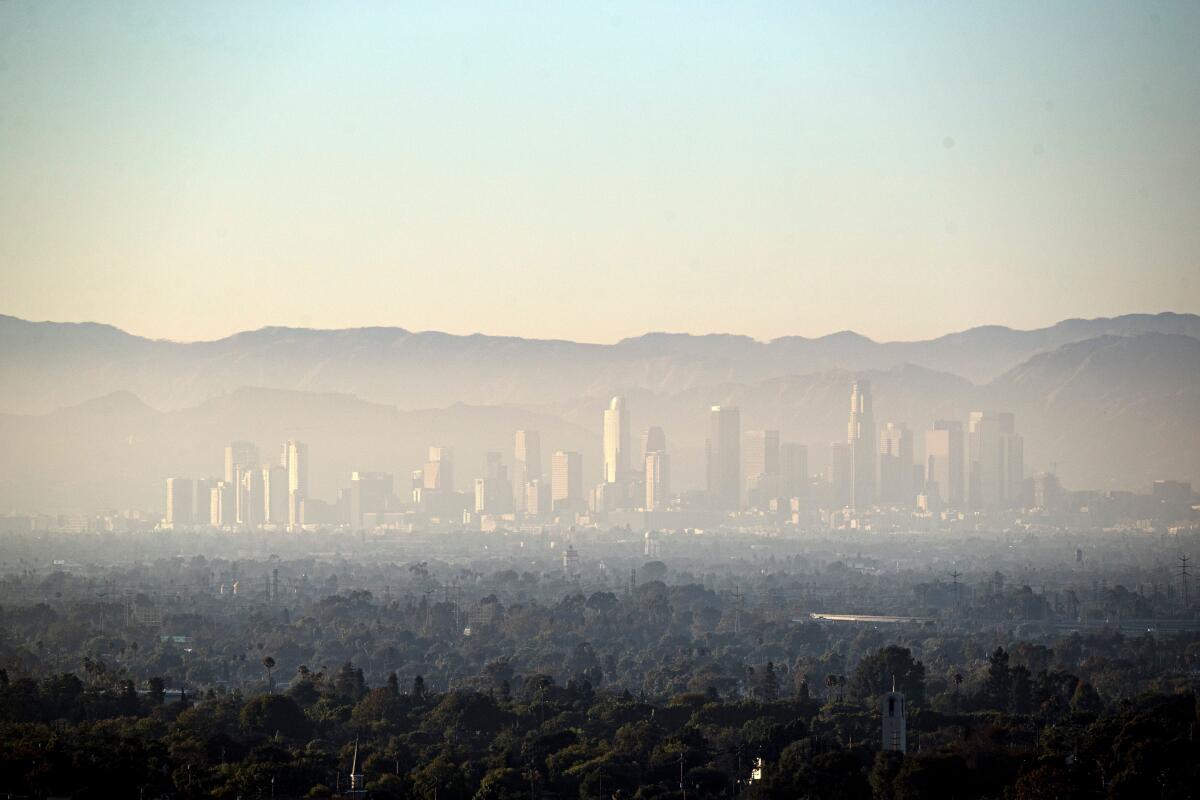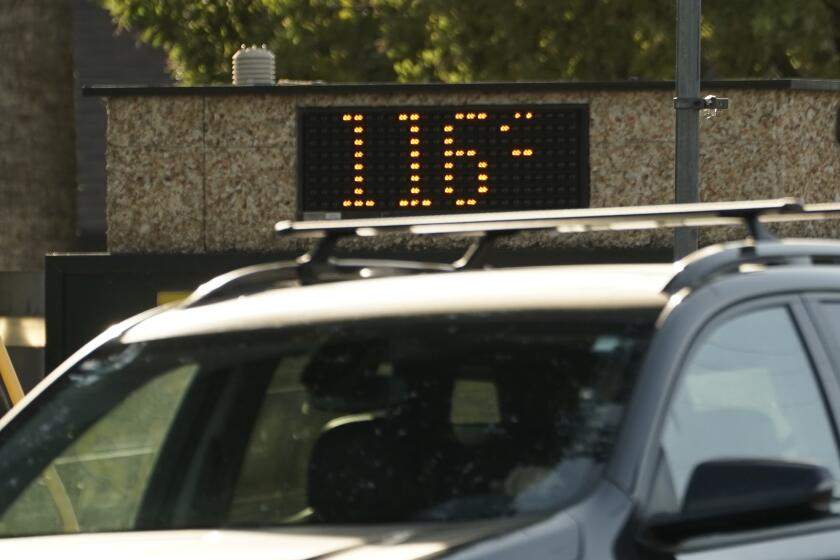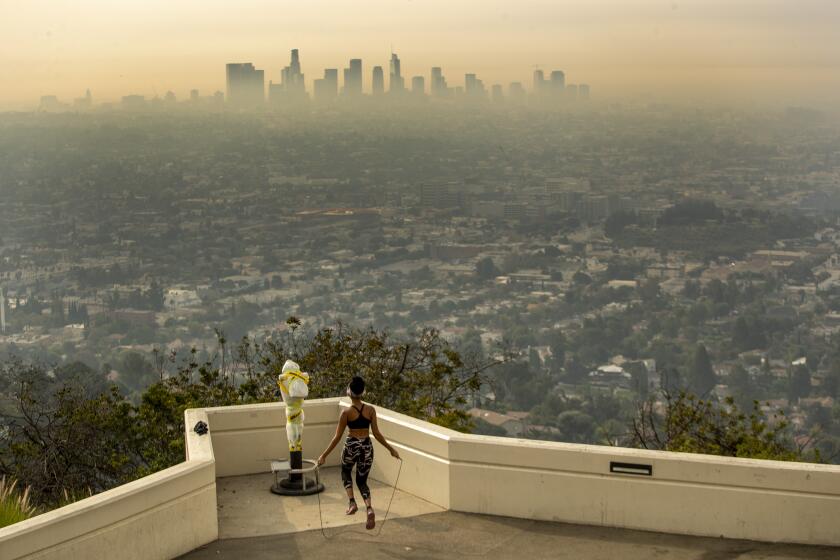Editorial: Biden’s EPA is needlessly delaying smog standards until after the election

- Share via
On his first day in office, President Biden ordered the Environmental Protection Agency to reconsider dozens of actions taken by the Trump administration. One of the most important on that list was the last-minute decision in December 2020 to keep in place outdated health standards for smog.
But now, instead of moving to strengthen the nation’s limits on ozone — the lung-searing gas in smog — the Biden administration is delaying action until after the November 2024 election.
EPA Administrator Michael S. Regan announced last week that rather than fix the Trump administration’s decision, the agency would start over again with an entirely new review. Because the federal rule-making process is slow, it means the smog standards will not be updated for at least a few more years.
This needless delay will harm people across the country by making them wait longer for relief from ozone pollution that inflames the lungs, triggering asthma attacks and other serious respiratory illnesses that sicken people and can require hospitalization and cut lives short. It’s been nearly eight years since these standards were updated and with this decision that’s likely to stretch beyond a decade. It’s all the more infuriating because the inaction is cloaked in the language of scientific integrity and the need for additional study. Paralysis by analysis, as the saying goes.
We need better, more timely information on death and illness caused by heat waves, the deadliest climate-fueled disasters. Not just one off reports nearly a year after the fact.
Regan’s decision came two months after the agency’s Clean Air Scientific Advisory Committee, an independent panel of experts, concluded that the current ozone standard of 70 parts per billion “is not sufficiently protective of public health.” The panel said it should be strengthened to between 55 and 60 ppb, based on scientific evidence that even healthy young adults are experiencing bad health effects with the current “safe” smog levels.
The agency defends the decision to redo the analysis with the excuse that the latest science was not included in its prior assessments and that a new review will be more thorough and unassailable. It says there is no hidden agenda behind the do-over. But this action comes awfully close to President Obama’s cynical and science-denying move in 2011 to stop the EPA from issuing tougher ozone standards so as not to hurt his reelection chances.
Reviewing and updating air quality standards every five years to reflect the latest science, as required by the Clean Air Act, is one of the most important environmental actions a president can take. But ozone is such a widespread and hard-to-clean pollutant it’s one of the most highly politicized too.
More protective standards, as the current science demands, will force the nation’s polluting industries, including big factories, oil and gas operations and power plants, to do more to clean up. Business interests and local officials don’t like that, and as a result, presidents of both parties have chosen to disregard science and delay action. It’s disappointing to see the Biden administration join that list.
That’s not actually good enough. The president must scale up his response to the climate crisis accordingly and follow through with bold new actions.
This kind of foot-dragging has real consequences, not only in slowing the cleanup of dangerous air pollution, but by giving Americans a false picture of how safe it is to breathe.
It has been clear since George W. Bush was president that the nation’s limits on ozone pollution are too permissive and that air currently designated as safe may actually be unhealthy. More stringent ozone standards would change that, updating the Air Quality Index to more accurately reflect the risks. It would also extend the protections of the Clean Air Act to more of the country because many areas with smog levels that meet the current standard of 70 ppb would violate a tougher limit, so many states would have to cut emissions to get back into compliance.
Leaving the daily standard at the same level set 16 years ago would give Americans the false impression that the air they are breathing is safe.
Regan has sought to reorient the EPA around environmental justice, but his actions undermine his words because air pollution hits communities of color hardest. It’s worth remembering that many of the same actions needed to curb smog-forming pollution also reduce planet-warming greenhouse gas emissions, and would help put the administration on track to meeting its ambitious climate targets.
Environmental groups who have decried the agency’s delay are urging Regan to finalize new health standards by the end of 2025, a reasonable demand. But the timeline the agency has provided so far suggests it won’t be anywhere near that quick.
The EPA should at the very least commit to that timeline, while working on other rules to speed up the nation’s progress on cutting smog. When it comes to pollution that is continually harming communities and damaging children’s developing lungs, clean air delayed is clean air denied. And that’s almost as bad as doing nothing at all.
More to Read
A cure for the common opinion
Get thought-provoking perspectives with our weekly newsletter.
You may occasionally receive promotional content from the Los Angeles Times.













